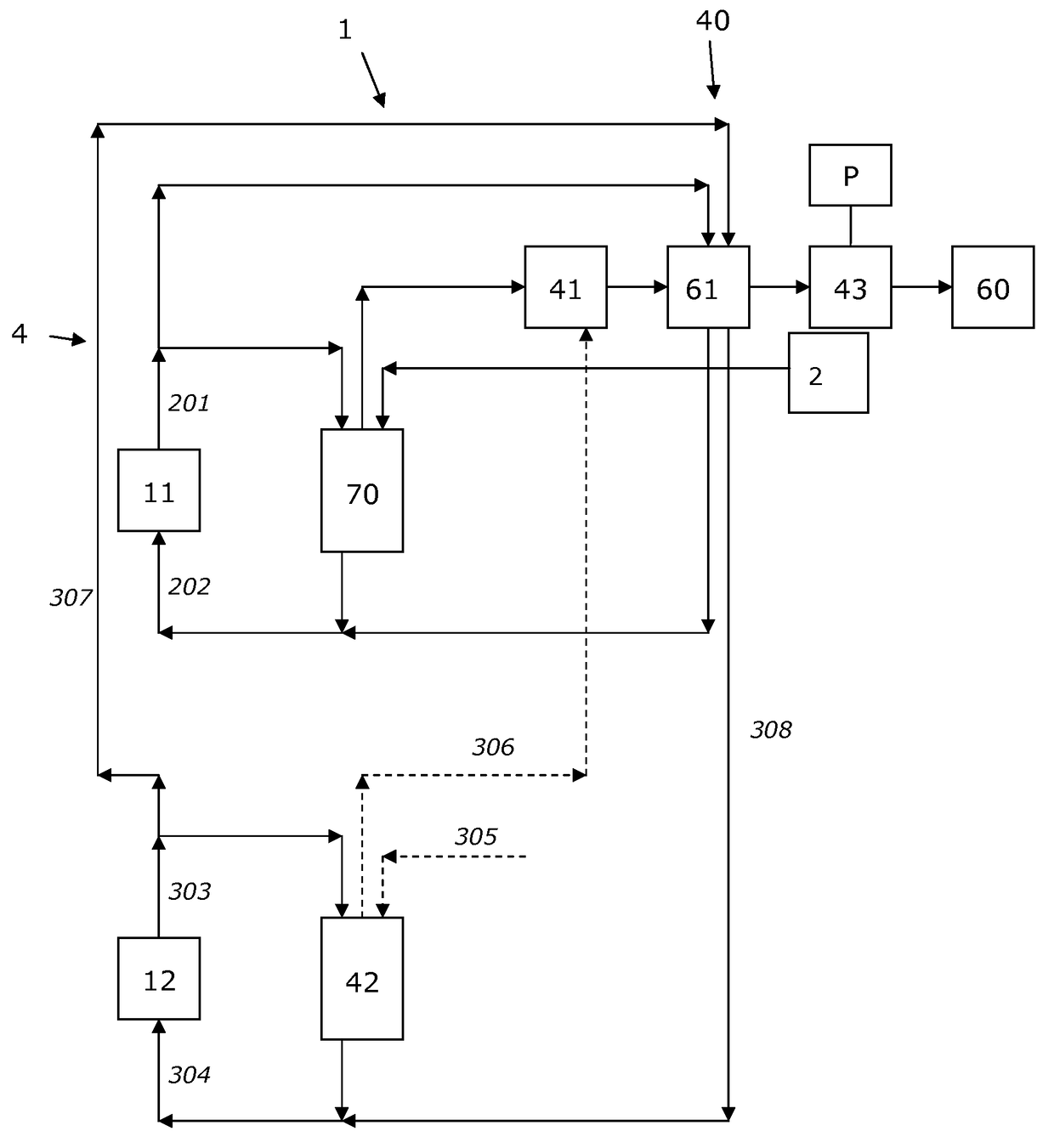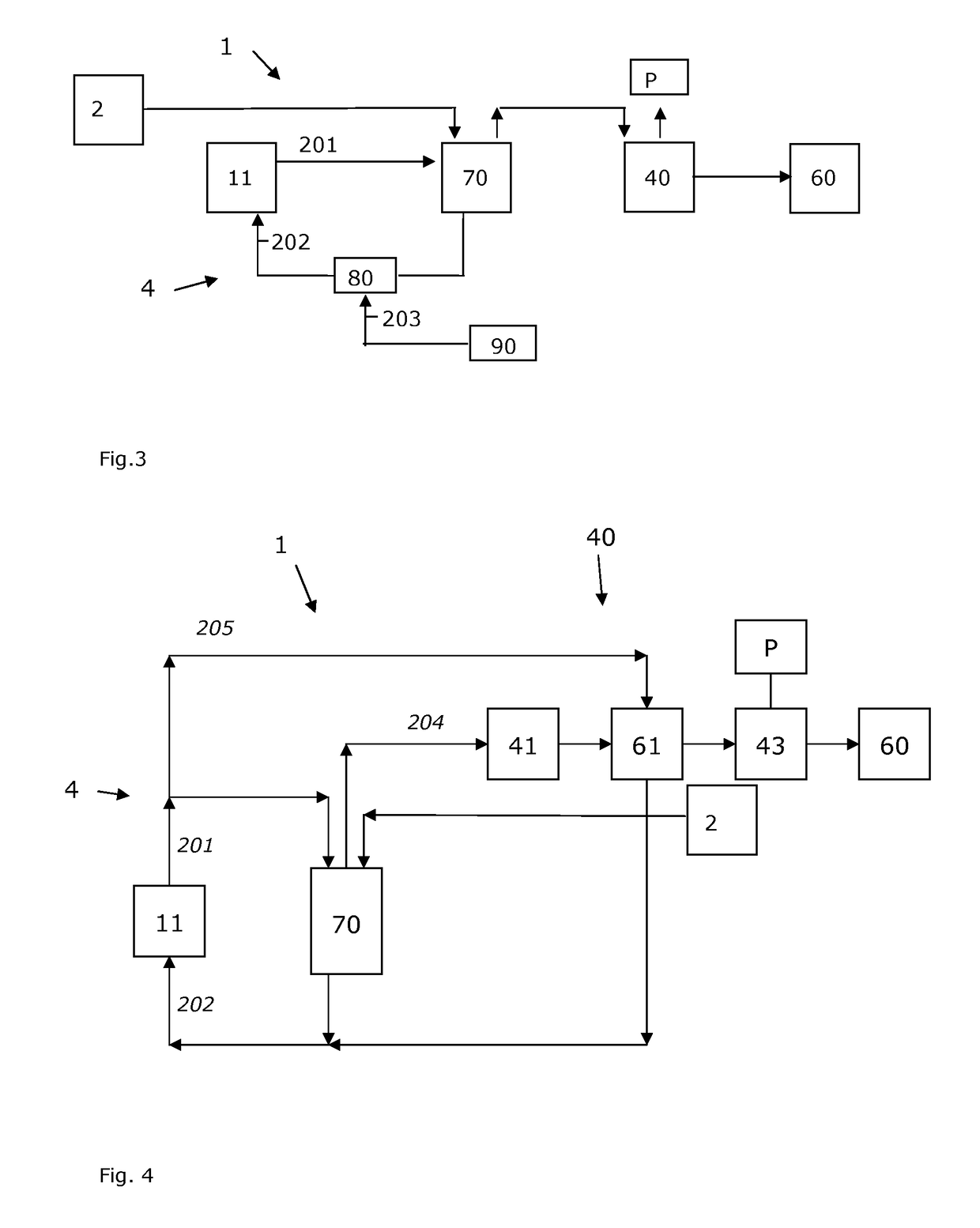Method for modifying a solar thermal power plant operating on conventional oil based technology into a hybrid solar thermal power plant and such a hybrid solar thermal power plant
a solar thermal power plant and hybrid technology, applied in the direction of solar heat generation, steam generation using hot heat carriers, lighting and heating apparatus, etc., can solve the problems of low efficiency of known low efficiency of steam transfer cycle into electricity, and inability to meet the needs etc., to achieve the effect of reducing the cost of operation and maintenance, and improving the efficiency of solar thermal power plants
- Summary
- Abstract
- Description
- Claims
- Application Information
AI Technical Summary
Benefits of technology
Problems solved by technology
Method used
Image
Examples
Embodiment Construction
[0032]In FIG. 1, an example of a prior art solar thermal power plant 2 based on conventional oil based technology is shown. The solar thermal power plant 2 comprises a solar collection system 10. The solar collection system 10 comprises one or more radiation absorber tubes and a plurality of trough collectors, such as single axis parabolic reflectors. Alternatively, the solar collection system 10 may be provided with any suitable means for concentrating solar radiation, such as Fresnel collectors. The radiation absorber tubes contain a thermal fluid used as heat transfer fluid, such as diathermic oils which are commercially available, for instance commercially available under the trade name Terminal® VP1. Flowing inside the radiation absorber tubes, the heat transfer fluid is heated by the exposure to concentrated solar radiation. The heat transfer fluid may be heated to an upper threshold temperature that has to be chosen as the highest safe working temperature for the heat transfe...
PUM
 Login to View More
Login to View More Abstract
Description
Claims
Application Information
 Login to View More
Login to View More - R&D
- Intellectual Property
- Life Sciences
- Materials
- Tech Scout
- Unparalleled Data Quality
- Higher Quality Content
- 60% Fewer Hallucinations
Browse by: Latest US Patents, China's latest patents, Technical Efficacy Thesaurus, Application Domain, Technology Topic, Popular Technical Reports.
© 2025 PatSnap. All rights reserved.Legal|Privacy policy|Modern Slavery Act Transparency Statement|Sitemap|About US| Contact US: help@patsnap.com



